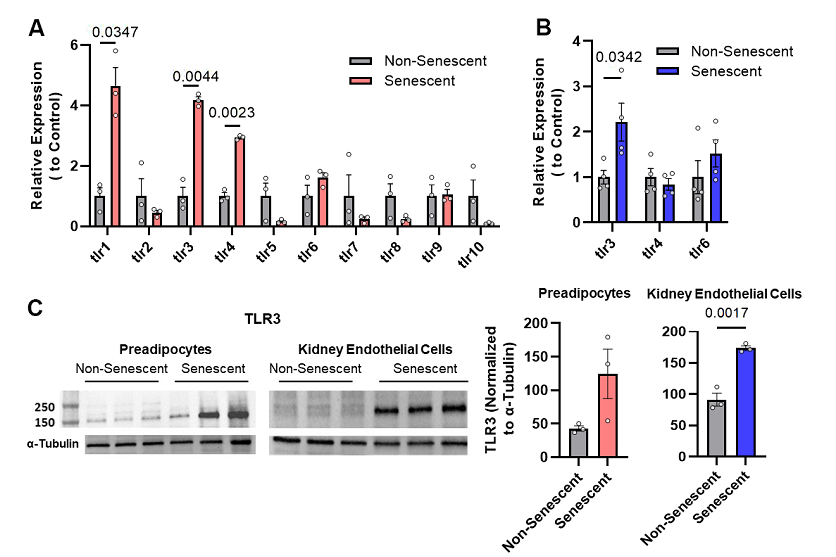PV-SARS-CoV-2-S-VSV-ΔG was used as pseudovirus to study SARS-CoV-2. (From
BrainVTA)
The viruses used in this article from BrainVTA are in the table below
|
VSV-S |
PV-SARS-CoV-2-S-VSV-ΔG |
Utkarsh Tripathi, Rayhane Nchioua, Larissa G. P. Langhi Prata, Yi Zhu, Erin O. Wissler Gerdes, Nino Giorgadze, Tamar Pirtskhalava, Erik Parker, Ailing Xue, Jair Machado Espindola-Netto, Steffen Stenger, Paul D. Robbins, Laura J. Niedernhofer, Stephanie L. Dickinson, David B. Allison, Frank Kirchhoff, Konstantin Maria Johannes Sparrer, Tamar Tchkonia, James L. Kirkland
Pub Date: 2021-09-16,
DOI: 10.18632/aging.203560,
Email: sales@brainvta.com
Senescent cells, which arise due to damage-associated signals, are apoptosis-resistant and can express a pro-inflammatory, tissue-destructive senescence-associated secretory phenotype (SASP). We recently reported that a component of the severe acute respiratory syndrome coronavirus 2 (SARS-CoV-2) surface protein, S1, can amplify the SASP of senescent cultured human cells and that a related mouse β-coronavirus, mouse hepatitis virus (MHV), increases SASP factors and senescent cell burden in infected mice. Here, we show that SARS-CoV-2 induces senescence in human non-senescent cells and exacerbates the SASP in human senescent cells through Toll-like receptor-3 (TLR-3). TLR-3, which senses viral RNA, was increased in human senescent compared to non-senescent cells. Notably, genetically or pharmacologically inhibiting TLR-3 prevented senescence induction and SASP amplification by SARS-CoV-2 or Spike pseudotyped virus. While an artificial TLR-3 agonist alone was not sufficient to induce senescence, it amplified the SASP in senescent human cells. Consistent with these findings, lung p16INK4a+ senescent cell burden was higher in patients who died from acute SARS-CoV-2 infection than other causes. Our results suggest that induction of cellular senescence and SASP amplification through TLR-3 contribute to SARS-CoV-2 morbidity, indicating that clinical trials of senolytics and/or SASP/TLR-3 inhibitors for alleviating acute and long-term SARS-CoV-2 sequelae are warranted.
 Figure 1. Toll-like receptor-3 (TLR-3) is increased in senescent vs. non-senescent human kidney endothelial cells and preadipocytes.
Figure 1. Toll-like receptor-3 (TLR-3) is increased in senescent vs. non-senescent human kidney endothelial cells and preadipocytes.
In this study, the authors examined innate immune responses to SAR-CoV-2 and links to cellular senescence. They found that both a Spike pseudotyped virus (pseudovirus) and the genuine SARS-CoV-2 virus can induce senescence in human cells. Furthermore, the senescent cell SASP was amplified by TLR-3-dependent signaling. Clinical trials appear be warranted to ascertain if senolytics, agents that selectively eliminate senescent cells, senomorphics, which inhibit the SASP, and/or TLR-3 inhibitors can alleviate acute or long-term sequelae of SARS-CoV-2 infection.
BrainVTA offers viral vector construction & virus packaging services for AAV, LV, RABV, PRV, HSV and VSV that help researchers explore questions about genes, neurons, circuitry structure, function of brain network, mechanism and treatment of diseases.
If you have any needs, just email us at
sales@brainvta.com.
